Oom Izak’s warm welcome en route to the Kuiseb & Swakopmund
I picked up some unusual travelling literature on a recent trip through Namibia, a book called ‘Faraway Sandy Trails’ written by Lily Marion Newton more than sixty years ago. It gave me the opportunity to compare routes and find amusing and interesting anecdotes about the country and the days of travel before organised tourism and tar roads.
I opened the book on the chapter called ‘Desert Adventure’. Lily and husband Charles had tackled the Gamsberg Pass earlier in the day, a hair-raising experience at the time, and still had the Kuiseb Pass to negotiate before they reached Swakopmund.
Lily wrote: ‘We were now at the foot of the great plateau which skirts the eastern side of the Namib and on the level approaching the desert. Here were the last farms, at least fifteen miles apart with rarely a living thing to be seen between them.’
Time and terrain were not on their side, however, and with the many tracks that crisscrossed the sand, they missed the main one and Mr Jordaan’s farm, a landmark on their map. A shortcut and a challenging rugged track over the hills led them to the most outlying farm on the road to the Kuiseb Pass, where they met Oom Izak. He lived alone on the farm and was delighted to have guests. When he heard their story he quickly dissuaded them from driving the nineteen miles they wanted to do before setting up camp for the night. “You have come over the Gamsberg Pass, you say? Well believe me, the Kuiseb crossing is doubly difficult and dangerous and should you strike it in the dark, you will be in great trouble. No, I think you’d better stay with me; humble though my home is, I will make you very welcome.”
As they agreed that they didn’t want to tackle another switchback pass that day, they accepted his generous invitation. Oom Izak contributed his staple commodities of tinned pilchards, eggs and coffee to their sausages, meat and bread, which made him feel like it was Christmas all over again. After supper, they gathered around the table with a pot of coffee and sat talking until after midnight, or at least Oom Izak sat talking. They discovered that he was a born storyteller, and although prone to exaggeration at times, was highly entertaining and extremely likeable. He also was hard of hearing, so whenever someone wanted to ask him a question, they had to bellow to make themselves heard.
‘He told of his trek over the Gamsberg with pack-donkeys and of the little shack of sorts he put under one of the big trees down in the Poort a couple of miles from his present home. “You know,” he continued, “there were still a few Bushmen (San) roaming about there. One of them must have been anything between a hundred and a hundred and fifty years old; and the old fellow told me he could remember the days when rhino and hippo roamed around these waterholes. Perhaps such animals did, for there is even now a tremendous amount of water in the Poort – I’ll show you tomorrow. When I lived down there I used to swim in the holes which were up to twenty feet deep, but so many leopards came down from the krantzes round about that I was never safe, consequently I moved away and decided to put up my home here in the open.”’
True to his word, after a sleepless night – which Lily spent in the car giving the men the extra room in the house – and much-needed coffee, Oom Izak took them in his jeep to the Poort where only the occasional leopard could now be seen. Lily was black and blue after being bounced and bumped around in the vehicle ‘over hills and dales, boulders and dongas’. After encouraging them to climb down a steep incline to a cave to see Bushman paintings and showing them the pools, Oom Izak found that his jeep wouldn’t start, with only the top gear functional. When they fortuitously spotted a farmer coming through the Poort, they flagged him down. While Charles caught a ride in the back with a pedigreed karakul ram, Lily jumped onto the back of the jeep and after the men pushed it into top gear, she held on for her life as Oom Izak rushed off, the jeep emulating a bucking bronco as he charged up and over and down everything at top speed.
When they arrived at his farm, and after much-needed coffee, they sadly said goodbye to Oom Izak and continued to the Kuiseb. They were grateful that they had spent the night with him. ‘The road was narrow and gravelly, descending at an angle of forty-five degrees mostly and winding back on itself without consideration for gradient or the type of vehicle upon it.’ They stopped on a short strip of level road to cool the brakes before reaching the last straight drop where they pancaked into the sandy bed of the river. They snaked through the soft sand, found the break on the opposite bank and climbed out of the Kuiseb up to the Namib Desert. They were met with desert wind, glaring sand and many tracks that radiated outwards. They lost their way a few times, backtracking to find the main one, before reaching the coast.
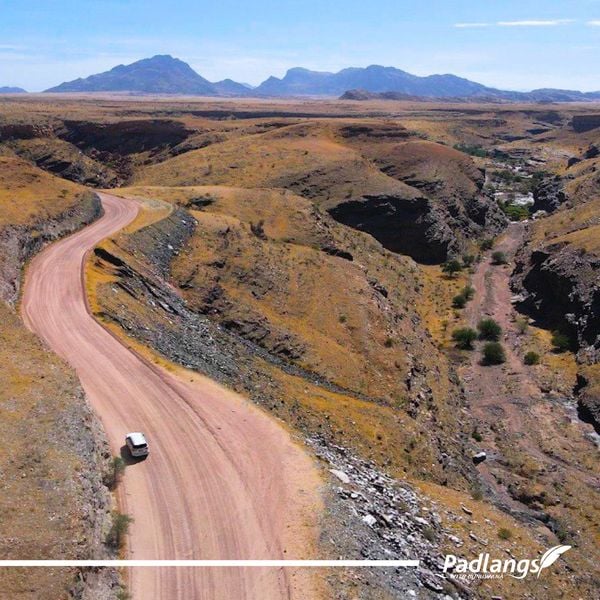
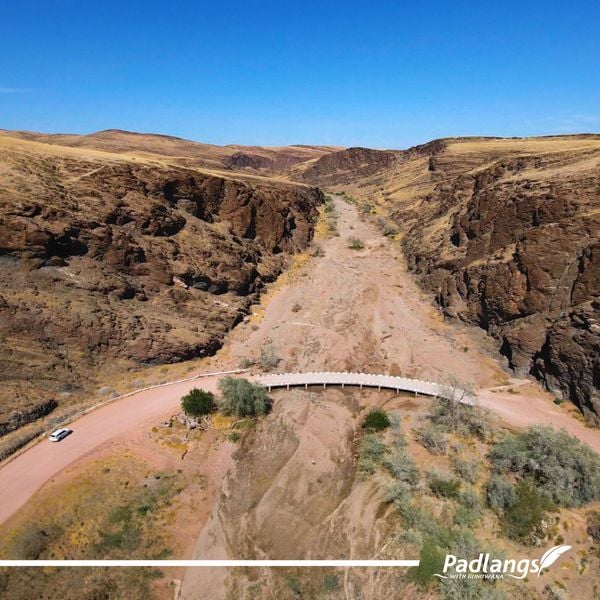
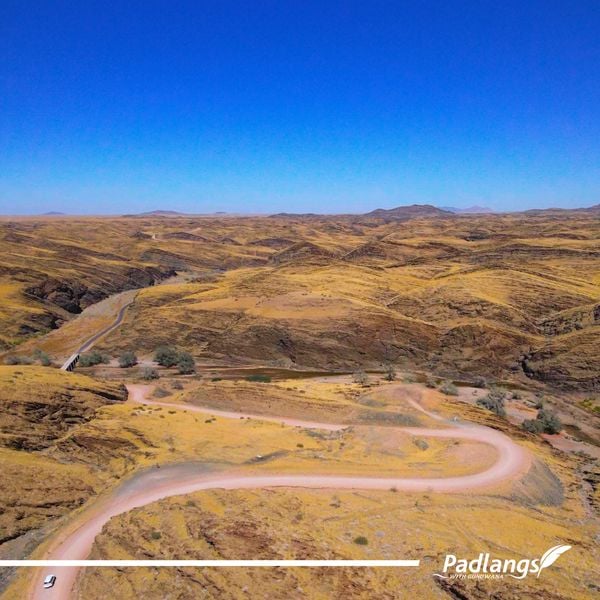
Swakopmund was cool relief, where they unexpectedly got stuck in the sand on one of the side streets and then experienced the dusty east wind that arrived with a vengeance. They still good-naturedly decided that despite all the hazards of desert travel, they would do it all again if it were possible, but that a road was being built through the Namib. Lily wrote that ‘the next journey would lack much of the danger and the sense of adventure of the first; though for the peace of mind of most travellers this would be all to the good. There would still be the fun of driving through unusual country . . .’
More than sixty years later, like most travellers heading to the Sossusvlei surrounds from Swakopmund or Walvis Bay, I enjoyed travelling this way, crossing over the small single-lane bridge that now spans the Kuiseb riverbed. Although not as daunting, the route is still adventurous and exciting, even more so after the rains when the Kuiseb runs to the sea and the landscape is cloaked in green. The Kuiseb and Gaub passes traverse striking canyon scenery, and the road takes you past the Tropic of Capricorn and the frontier stop of Solitaire as it ushers you into a spectacular landscape with majestic mountains and burnished dunes.


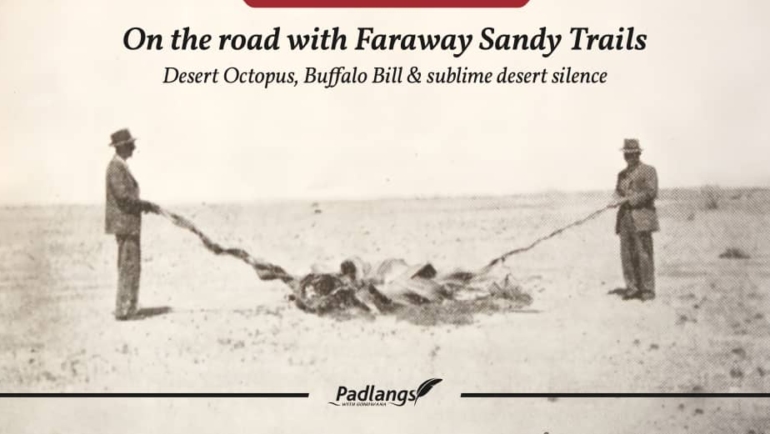
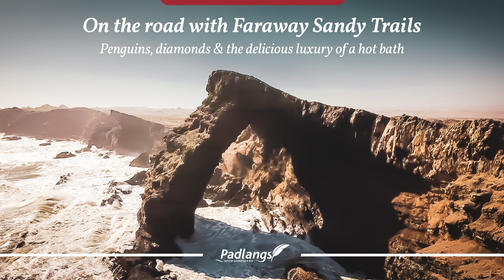
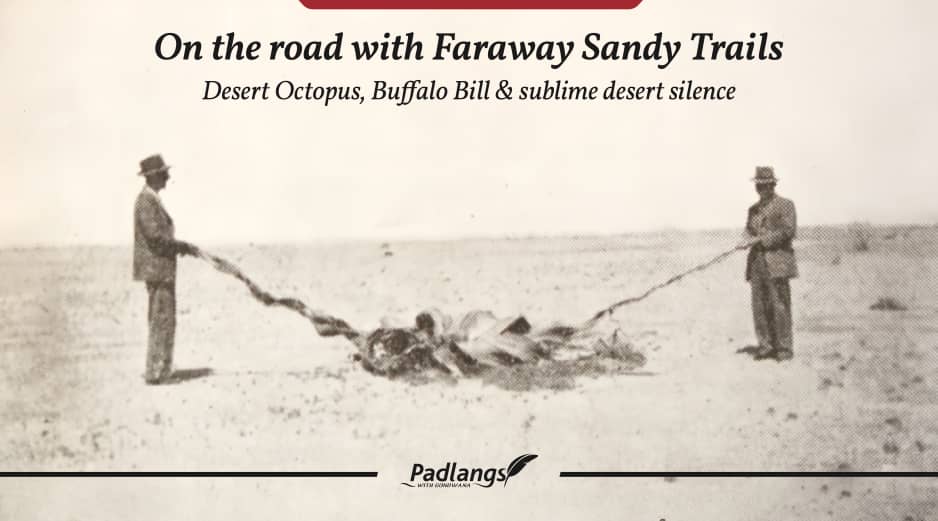




.png)

SUBMIT YOUR COMMENT